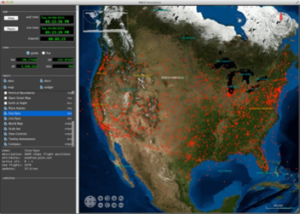Unmanned Aircraft Systems (UAS) operate today under many restrictions public use is restricted by the need for a Certificate of Authorization or waiver and by Experimental certificate for civil use. The goal of this project is to move toward more routine access for larger UAS, interacting with air traffic services in the non-segregated airspace. Routine access will require new equipage, standards, rules, procedures, and supporting research.
UAS-NAS Research Theme 1: UAS Integration

Airspace integration procedures and performance standards to enable UAS integration in the air transportation system. Technical challenges include Detect and Avoid (DAA) performance stands, Command & Control performance standards, and Human Systems Integration.
UAS-NAS Research Theme 2: Test Infrastructure
Test infrastructure to enable development and validation of and validation of airspace integration procedures and performance standards.
The DAA challenge comes from the requirement that pilots are required to see and avoid other aircraft. DAA-equipped UAS should seamlessly interoperate collision avoidance technologies. We have prototyped the Detect and Avoid Alerting Logic for Unmanned Systems (DAIDALUS) algorithm with alerting and guidance for self-separation along with a human-machine interface. Concept and algorithm are stress-tested in complex scenarios. UAV pilot and Air Traffic controller acceptability of concept and HMI assessed in collaborative LaRC/ARC human-in-the-loop simulations and NASA/Industry flight tests.
DAA operations are compatible with current ATC and IFR/VFR without segregation. Data and results provided to SC-228 and support Minimum Operational Performance Standards (MOPS). The algorithm is in use by avionics, manufacturers, and R&D centers.
Tech POC: Tod Lewis